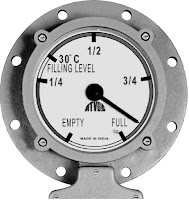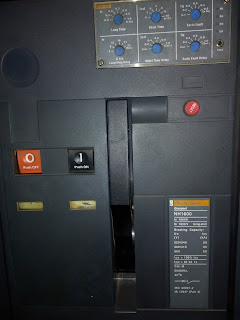"The Evolution of Data Centers: From Physical Locations to Intelligent Hubs" 🔗🏭 ➡️ 🤖🎛️.

Data centers are no longer just physical locations. With the rise of cloud computing, data can be stored and processed in multiple locations, including public and private clouds, on-premise data centers, and hybrid environments. This means that data centers are no longer limited to a single physical location. Instead, they can be distributed across multiple locations, making it easier to access and manage data from anywhere in the world.
1. 🌐 Global Data: Data is no longer confined to a physical location. It is now spread across the globe, stored in various servers, cloud storage, and even on personal devices. This global distribution of data has changed the traditional concept of a data center.
2. Paradigm Shift: Data Everywhere 🌍:The concept of data centers has undergone a significant transformation. In the digital age, data is no longer centralized; it permeates every aspect of our lives. 📲💻🔍
3. ☁️ Cloud Computing: With the advent of cloud computing, data is now stored in virtual spaces. This has revolutionized the definition of a data center, making it more of a virtual concept rather than a physical one.
4. 📱 Mobile Data: The proliferation of smartphones and other mobile devices has led to an explosion of data. This data is stored in various locations, further decentralizing the concept of a data center.
5. 🌐 Internet of Things (IoT): IoT devices generate a massive amount of data that is stored and processed in various locations. This has further expanded the definition of a data center.
6. 💻 Edge Computing: With edge computing, data is processed closer to where it is generated. This reduces the need for a centralized data center and further decentralizes data storage and processing.

7. 🔄 Real-Time Processing: The need for real-time data processing has led to the creation of micro data centers. These are smaller, more localized data centers that can process data quickly and efficiently.
8. 📈 Big Data: The rise of big data has led to the need for more powerful and efficient data centers. This has resulted in the development of hyper-scale data centers that can handle massive amounts of data.
9. 🔄 Data Center as a Service (DCaaS): With DCaaS, companies can rent space in a data center rather than owning one. This has changed the traditional concept of a data center and made it more accessible to smaller businesses.
10. 🌍 Green Data Centers: With the increasing concern for the environment, green data centers have become more popular. These data centers are designed to be energy-efficient and reduce their carbon footprint.
11. The Future: Data Centers Unleashed 🚀💡: As data continues to expand exponentially, the future holds exciting possibilities. Innovations like quantum computing and 5G networks will shape the data center landscape, pushing the boundaries of what is possible. 🌌🔬📶


In conclusion, the traditional concept of a data center has changed dramatically. Data is now everywhere, and the data center is wherever data exists. This has led to the development of new technologies and strategies to store, process, and secure data.
Data is no longer just a commodity that needs to be stored. It is a valuable asset that needs to be managed, analyzed, and distributed in real-time. With the evolution of data centers, businesses can now leverage the power of data to drive innovation and growth, while also ensuring that their data is secure, sustainable, and accessible from anywhere in the world.





Comments
Post a Comment